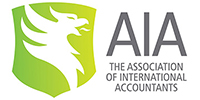A comprehensive survey conducted by the British Business Bank has revealed that lending to small and medium-sized businesses in the UK is growing for the first time since the financial crisis began.
The Government-backed lender welcomed the renewed availability of bank debt in its Small Business Finance Markets Report, which increased for four consecutive quarters in the year to October 2015 for the first time since 2007-8.
Growth totalling £1.6 billion in the net flow of bank loans (excluding overdrafts) was recorded at the beginning of October 2015, showing that banking still plays an important part in handling the majority of lending to SMEs.
In fact, banks still account for more than 80 per cent of lending, with the ‘Big Four’ high street banks holding 78 per cent of this amount.
Much of the funding went to medium-sized businesses while those with fewer than 50 employees were still struggling to borrow and start-ups (defined as businesses that are less than five years old) had a 50 per cent rejection rate from banks.
The study also found a surge in private equity and peer-to-peer finance for SMEs during this period. Asset-based finance, where money is advanced against invoices or equipment such as hire purchase, rose almost 10 per cent to £16.3 billion at the end of November 2015.
Equity finance investment in smaller businesses rose 43 per cent in the year to October 2015 to £2.4 billion, partly driven by Government tax incentives. Meanwhile, the alternative finance sector, including peer-to-peer lending, increased by 75 per cent to £1.26 billion in 2015.
The report also stated that 71 per cent of equity funds went to companies in London and the south-east, although they accounted for just 34 per cent of the business population.
Keith Morgan, Chief Executive of the British Business Bank, said: “While there are encouraging signs that volumes are up and alternative finance markets are thriving, there remain areas that still require attention.”
Link: British Business Bank: Small Business Finance Markets Report






